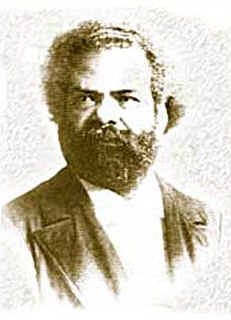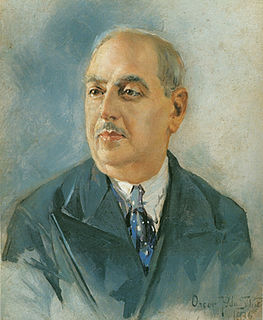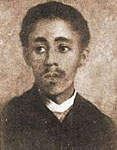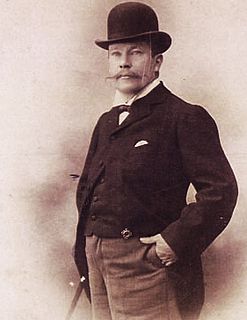 W
WJosé Ferraz de Almeida Júnior, commonly known as Almeida Júnior, was a Brazilian artist and designer; one of the first there to paint in the Realistic tradition of Gustave Courbet and Jean-François Millet. The "Dia do Artista Plástico" is celebrated on his birthday.
 W
WBelmiro Barbosa de Almeida was a Brazilian painter, illustrator, sculptor and caricaturist.
 W
WCrispim do Amaral was an actor, decorator, journalist, painter, draftsman, illustrator, and caricaturist in Brazil.
 W
WPedro Américo de Figueiredo e Melo was a Brazilian novelist, poet, scientist, art theorist, essayist, philosopher, politician and professor, but is best remembered as one of the most important academic painters of Brazil.
 W
WRodolfo Amoedo was a Brazilian painter, designer and decorator.
 W
WHenrique Bernardelli was a Brazilian painter.
 W
WModesto Brocos y Gómez was a Spanish painter, and engraver, naturalized Brazilian citizen.
 W
WBenedito Calixto de Jesus was a Brazilian painter. His works usually depicted figures from Brazil and Brazilian culture, including a famous portrait of the bandeirante Domingos Jorge Velho in 1923, and scenes from the coastline of São Paulo. Unlike many artists of the time, Calixto's patron was an individual other than the state, who were "the most dependable source of patronage."
 W
WHipólito Boaventura Caron (1862–1892) was a Brazilian painter and designer associated with the "Grupo Grimm".
 W
WJoão Zeferino da Costa was a Brazilian painter and designer.
 W
WAgostinho José da Mota was a Brazilian painter and teacher.
 W
WManuel Dias de Oliveira was a Brazilian painter, decorator and art professor.
 W
WDomingo García y Vásquez was a Spanish-born Brazilian landscape painter.
 W
WJosé Teófilo de Jesus was a Brazilian painter and gilder. He is the most noted representative of the Escola Baiana or Bahian School of painting. His work was eclectic, characterized by the passage from the Baroque to the Rococo, with reference to Neoclassical traits. De Jesus was of pardo, or mixed ethnic ancestry and lived into his nineties; little else is known of his life. His production was apparently vast, but many of his works are only identified by oral tradition. Although he is known as one of the great names of the Brazilian Baroque, and one of its final artists, details of his life and a full account of his works remain unclear.
 W
WVictor Meirelles de Lima was a Brazilian painter who is best known for his works relating to his nation's culture and history.
 W
WAntônio Firmino Monteiro was an Afro-Brazilian painter.
 W
WOscar Pereira da Silva was a Brazilian painter, draftsman, designer, and instructor. He was active from the end of the 19th to the mid-20th century. He is noted for his depictions of historical events in Brazil, but also completed numerous portraits, religious works, genre scenes, still lifes, and landscapes. He "paid no attention to Brazilian folk tradition" and painted in an "antique style." After a period of study in France, he pursued a lucrative career in São Paulo, where his works are displayed at the Pinacoteca do Estado de São Paulo and the Museu do Ipiranga.
 W
WKarl Ernst Papf, or Ernesto Papf was a German-born Brazilian photographer, painter and designer.
 W
WAntônio Diogo da Silva Parreiras was a Brazilian painter, designer and illustrator.
 W
WAntônio Rafael Pinto Bandeira (1863-1896) was an Afro-Brazilian painter and art professor.
 W
WJosé Rodrigues Nunes was a Brazilian artist who worked primarily in Salvador, Bahia. He was primarily a painter, but also worked in the fields of decoration, restoration, and set design. He was a student of Franco Velasco (1780-1833) and is the final painter of the Bahian School of Painting. Nunes taught drawing at Liceu Provincial de Salvador between 1837 and 1859. His students included Olímpio Pereira da Mata, Macário José da Rocha, João Francisco Lopes Rodrigues (1825-1893), Francisco da Silva Romão, and his son, Francisco Rodrigues Nunes. In addition to being a teacher, he worked as a scenographer at the São José Theater for many years. He is considered one of the representatives of the final phase of Bahian colonial painting. A series of paintings by Nunes is part of the personal collection of the Bahian physician Jonathan Abbot (1796-1868). He also produced portraits of Bahian religious figures and politicians.
 W
WManuel Lopes Rodrigues was a Brazilian Realist painter. Born in the city of Salvador, in the State of Bahia, he was initially homeschooled by his father, João Francisco Lopes Rodrigues, later entering at the Liceu de Artes e Ofícios, being taught by Miguel Navarro Cañizares.
 W
WEstêvão Roberto da Silva was an Afro-Brazilian painter and art teacher.
 W
WFélix Émile Taunay, Baron of Taunay, was a French Brazilian painter, and drawing and Greek teacher. He was the father of famous writer and politician Alfredo d'Escragnolle Taunay, the Viscount of Taunay.
 W
WPedro Weingärtner was an important Academic painter of Brazil, and the first artist born in Rio Grande do Sul to win international praise for his work.
 W
WAnna Clémence Bertha Abraham Worms was a French-born Brazilian art professor and painter of genre scenes and portraits.
 W
WEmmanuel Hector Zamor was a Brazilian-born painter who lived in France. He specialized in landscapes and still lifes in the style of the Barbizon school.